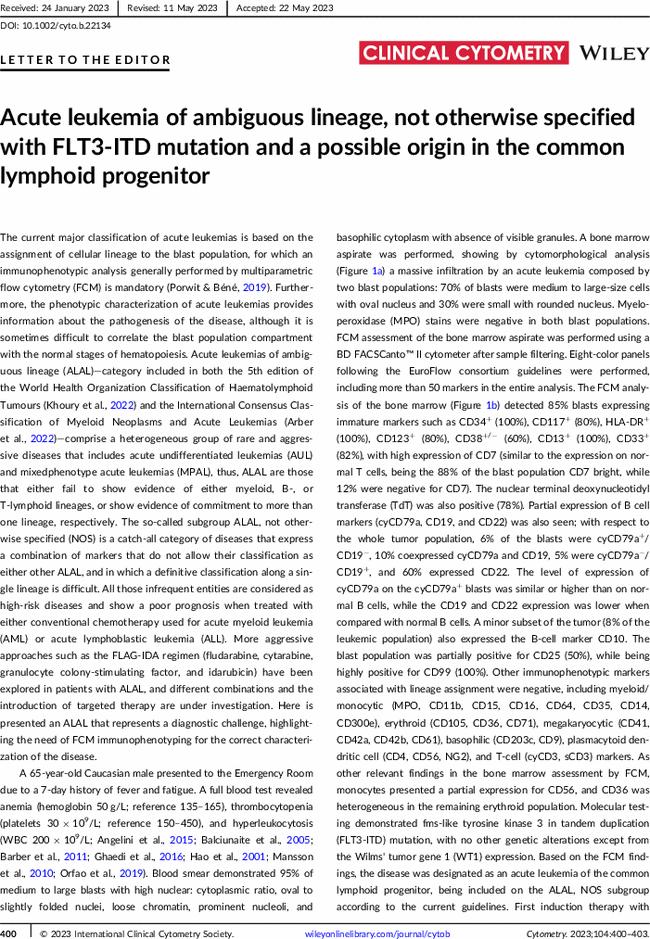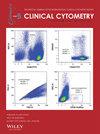Acute leukemia of ambiguous lineage, not otherwise specified with FLT3-ITD mutation and a possible origin in the common lymphoid progenitor
IF 2.3
3区 医学
Q3 MEDICAL LABORATORY TECHNOLOGY
引用次数: 1
Abstract
The current major classification of acute leukemias is based on the assignment of cellular lineage to the blast population, for which an immunophenotypic analysis generally performed by multiparametric flow cytometry (FCM) is mandatory (Porwit & Béné, 2019). Furthermore, the phenotypic characterization of acute leukemias provides information about the pathogenesis of the disease, although it is sometimes difficult to correlate the blast population compartment with the normal stages of hematopoiesis. Acute leukemias of ambiguous lineage (ALAL) — category included in both the 5th edition of the World Health Organization Classification of Haematolymphoid Tumours (Khoury et al., 2022) and the International Consensus Classification of Myeloid Neoplasms and Acute Leukemias (Arber et al., 2022) — comprise a heterogeneous group of rare and aggressive diseases that includes acute undifferentiated leukemias (AUL) and mixedphenotype acute leukemias (MPAL), thus, ALAL are those that either fail to show evidence of either myeloid, B, or T-lymphoid lineages, or show evidence of commitment to more than one lineage, respectively. The so-called subgroup ALAL, not otherwise specified (NOS) is a catch-all category of diseases that express a combination of markers that do not allow their classification as either other ALAL, and in which a definitive classification along a single lineage is difficult. All those infrequent entities are considered as high-risk diseases and show a poor prognosis when treated with either conventional chemotherapy used for acute myeloid leukemia (AML) or acute lymphoblastic leukemia (ALL). More aggressive approaches such as the FLAG-IDA regimen (fludarabine, cytarabine, granulocyte colony-stimulating factor, and idarubicin) have been explored in patients with ALAL, and

谱系不明确的急性白血病,没有FLT3-ITD突变,可能起源于常见的淋巴祖细胞。
本文章由计算机程序翻译,如有差异,请以英文原文为准。
求助全文
约1分钟内获得全文
求助全文
来源期刊
CiteScore
6.80
自引率
32.40%
发文量
51
审稿时长
>12 weeks
期刊介绍:
Cytometry Part B: Clinical Cytometry features original research reports, in-depth reviews and special issues that directly relate to and palpably impact clinical flow, mass and image-based cytometry. These may include clinical and translational investigations important in the diagnostic, prognostic and therapeutic management of patients. Thus, we welcome research papers from various disciplines related [but not limited to] hematopathologists, hematologists, immunologists and cell biologists with clinically relevant and innovative studies investigating individual-cell analytics and/or separations. In addition to the types of papers indicated above, we also welcome Letters to the Editor, describing case reports or important medical or technical topics relevant to our readership without the length and depth of a full original report.

 求助内容:
求助内容: 应助结果提醒方式:
应助结果提醒方式:


